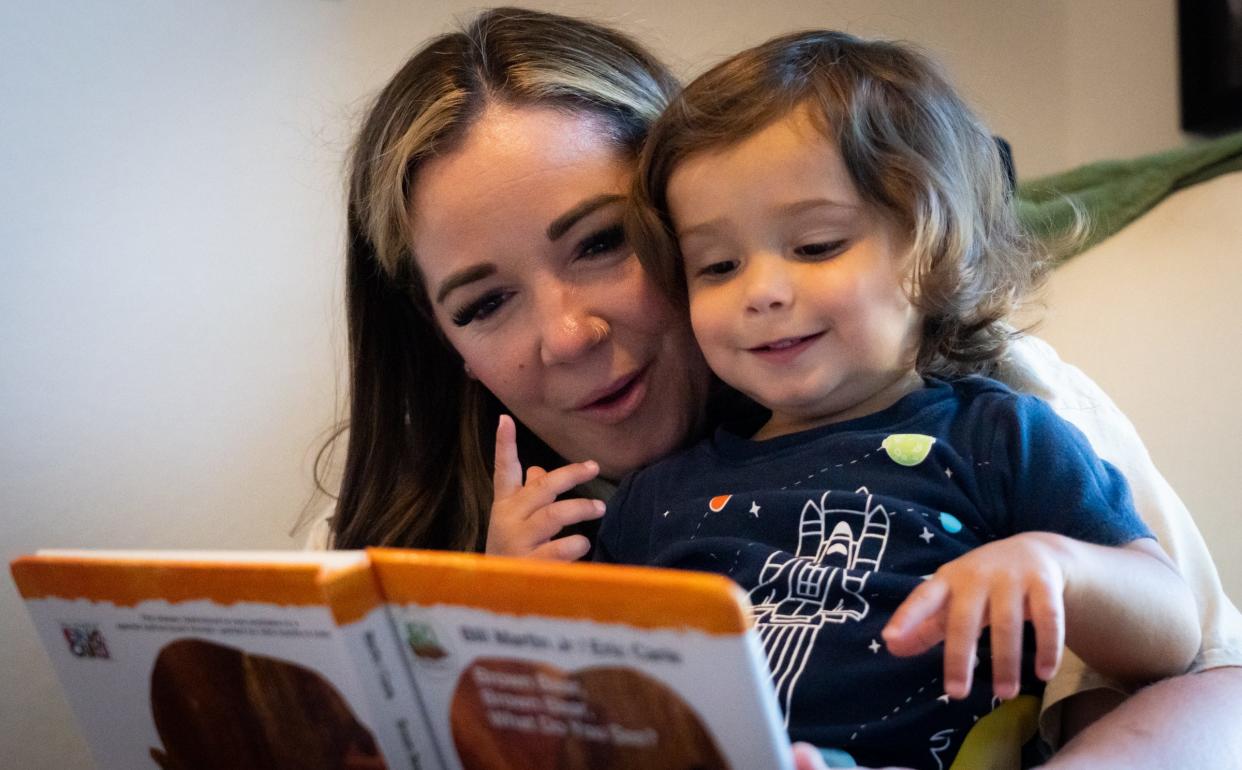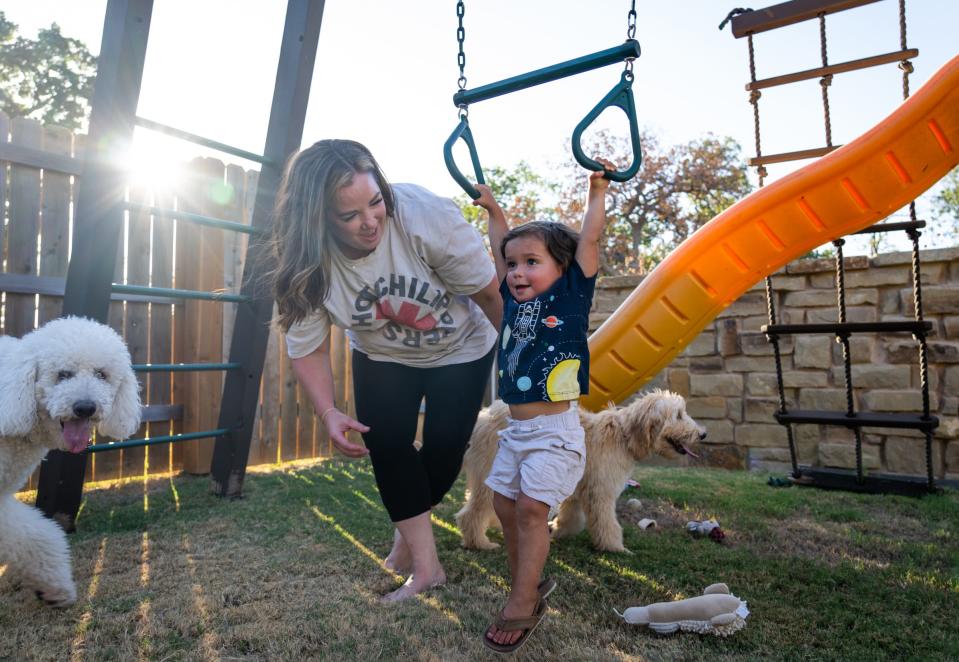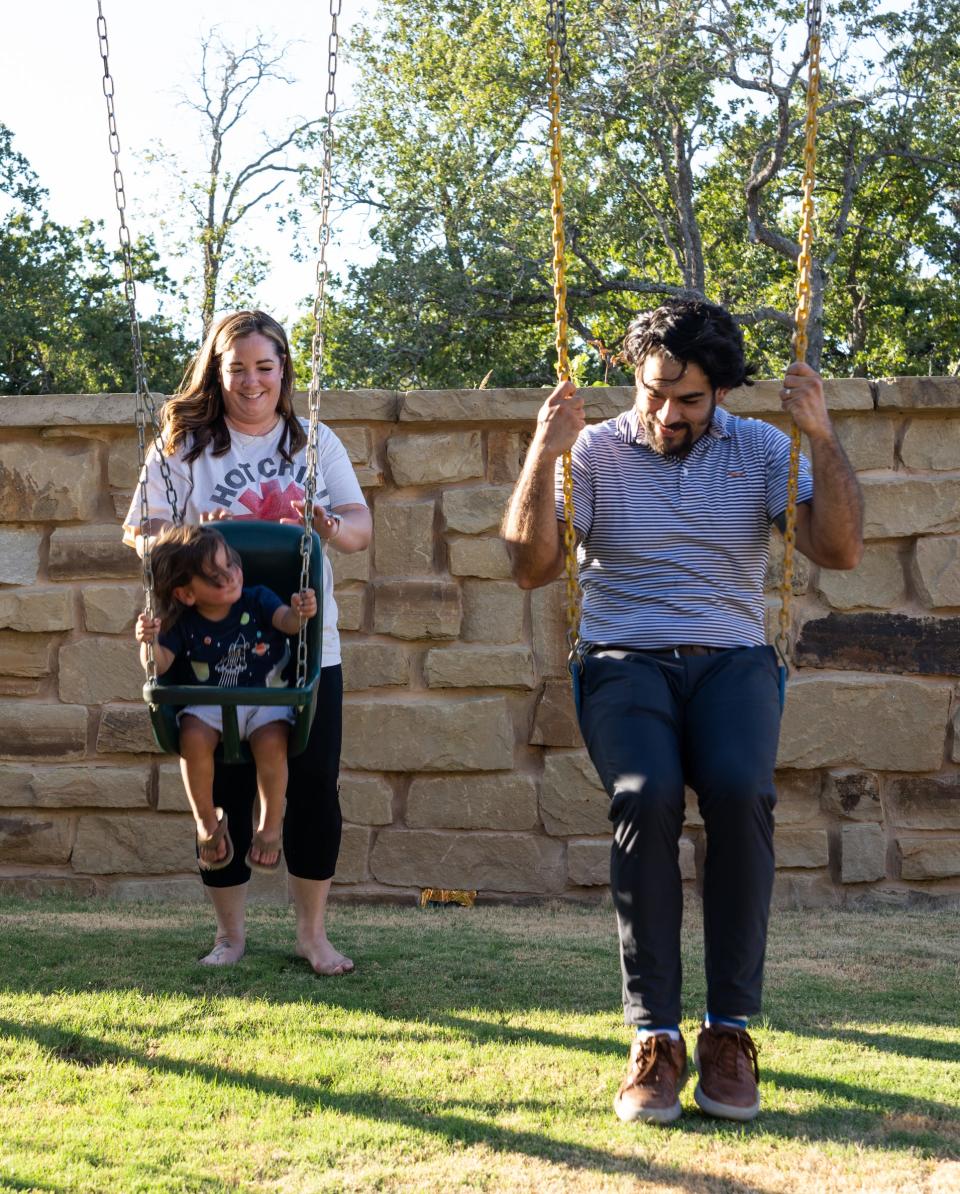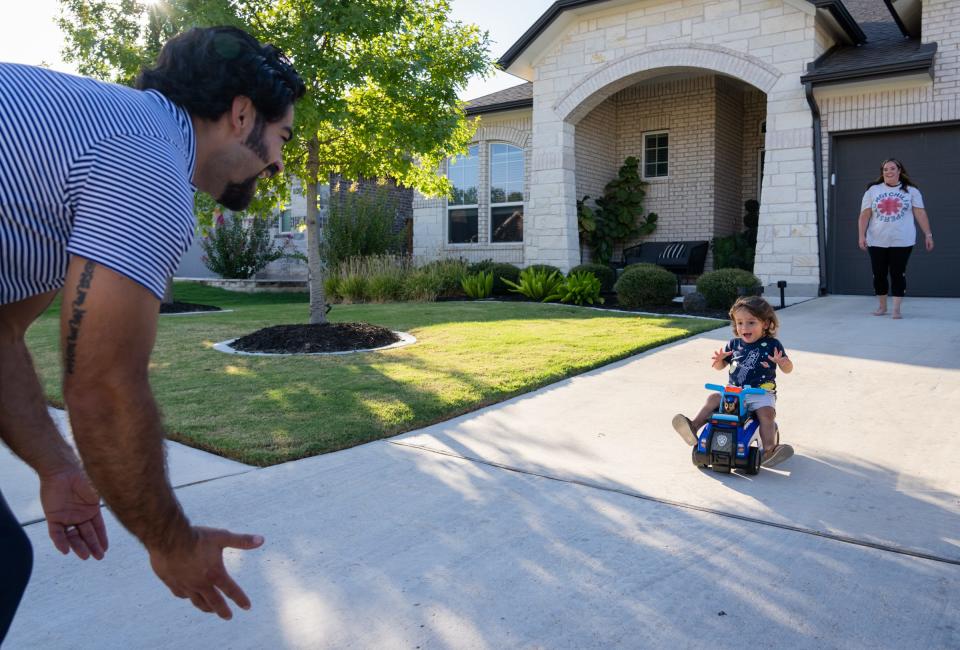'Out of the blue:' Austin doctors, nurse want you to know warning signs of preeclampsia

Labor and delivery nurse Amanda Holder was having what she thought was a pretty normal pregnancy.
Sure, her feet were a little swollen, and she could no longer wear her rings, but that's just part of pregnancy, she thought. She had acid reflux and was vomiting almost every night. She had headaches.
"I pretty much ignored all of my symptoms," Holder said.
At 32 weeks of gestation, she had seen both her obstetrician and a maternal fetal medicine doctor for gestational diabetes. Everything looked good, including her blood pressure.
Then, the next day at work at the St. David's Women's Center of Texas at North Austin Medical Center, Holder, then 35, was stopped by her boss. Holder was swollen, especially in her face.
A check of Holder's blood pressure, and then another check. A call to her obstetrician, a visit to the obstetric emergency department, and Holder was admitted to the hospital for preeclampsia.
"I never left the hospital after that," Holder said, until after the Leander mom had safely given birth to son Graham on Nov. 29, 2021, two weeks later.

What is preeclampsia?
The Centers for Disease Control and Prevention estimates 1 in 25 pregnant people are diagnosed with preeclampsia. Bleeding, preeclampsia and infection are top causes of maternal death, according to the World Health Organization.
Preeclampsia can happen any time after 20 weeks of gestation through six weeks after birth. Its notable symptom during pregnancy is an elevated blood pressure above 140/90 and 160/110 is considered severe preeclampsia.
Other extreme symptoms include:
Swelling, sudden weight gain or headache.
Vision issues including seeing spots or double vision.
Indigestion, including nausea or vomiting.
Trouble breathing, pain in the upper right quadrant of the body.
Increased protein in the urine, kidney damage.
Liver inflammation, blood coagulation disorders.
Some women won't feel any of these symptoms, doctors said.
"Even with prenatal care, this is a wonky disease," said Dr. Kimberly DeStefano, medical director of maternal fetal medicine at the Women's Center of Texas. "It can literally creep up out of the blue. ... It can be missed if it comes on suddenly and is severe."
In June, U.S. Olympic track gold medalist Tori Bowie died at eight months pregnant of eclampsia.

What causes preeclampsia?
Preeclampsia is usually a problem with the placenta, DeStefano said. The placenta isn't developing normally, but, as the placenta tries to fix its blood vessels, it causes the blood pressure to rise.
"The mom is mostly at risk," said Dr. Sandra Herrera, a maternal fetal medicine specialist and Holder's doctor, "but there are some fetal concerns such as placental insufficiency, fetal growth restriction and preterm delivery."
Which women are more likely to have preeclampsia?
You are more at risk if:
This is your first pregnancy or if you had a previous pregnancy with preeclampsia or a family history of preeclampsia.
You are a teenager or 35 or older.
You are obese.
You are pregnant with multiple babies.
You suffer from hypertension, kidney disease, diabetes, lupus or a blood clotting disorder.

What's the treatment for preeclampsia?
The only cure for preeclampsia is to deliver the placenta. Until delivery, doctors monitor symptoms to lessen them. In cases of severe preeclampsia, doctors will hospitalize the mother until delivery.
With Holder's pregnancy, once the nurse reached 34 weeks, she was induced to deliver her son.
"I was overcome with joy," Holder said. "I will never forget that moment, being surrounded by my labor and delivery family and just the love we felt."
Graham spent 16 days in the neonatal intensive care unit because he was born early.
Holder continued to have high blood pressure for about a week after delivery. While the delivery of the placenta does stop the preeclampsia, sometimes the symptoms can flare up postpartum, DeStefano said, because excess proteins are still circulating.
If after giving birth, a woman notices significant swelling, shortness of breath, heart issues, or something just doesn't feel right, she should call her doctor or go to the emergency room.
Today, Holder's son Graham is "a crazy toddler. We're definitely experiencing the Terrible Two's. He's very independent. He amazes me every single day, what he learns. He's the biggest blessing in our lives."
This article originally appeared on Austin American-Statesman: What is preeclampsia? Austin doctors, nurse warn of signs, symptoms

